
Maxfield Parrish was an American illustrator known for his colorfully ethereal, finely detailed, magnificently lit, and quasi-historical / mythological subjects. With his work never veering into the territory of rigid academicism nor avant-garde modernism, Parrish’s style was a category of its own that bears certain stylistic similarities with that of the Pre-Raphaelites from the United Kingdom in the 19th Century.
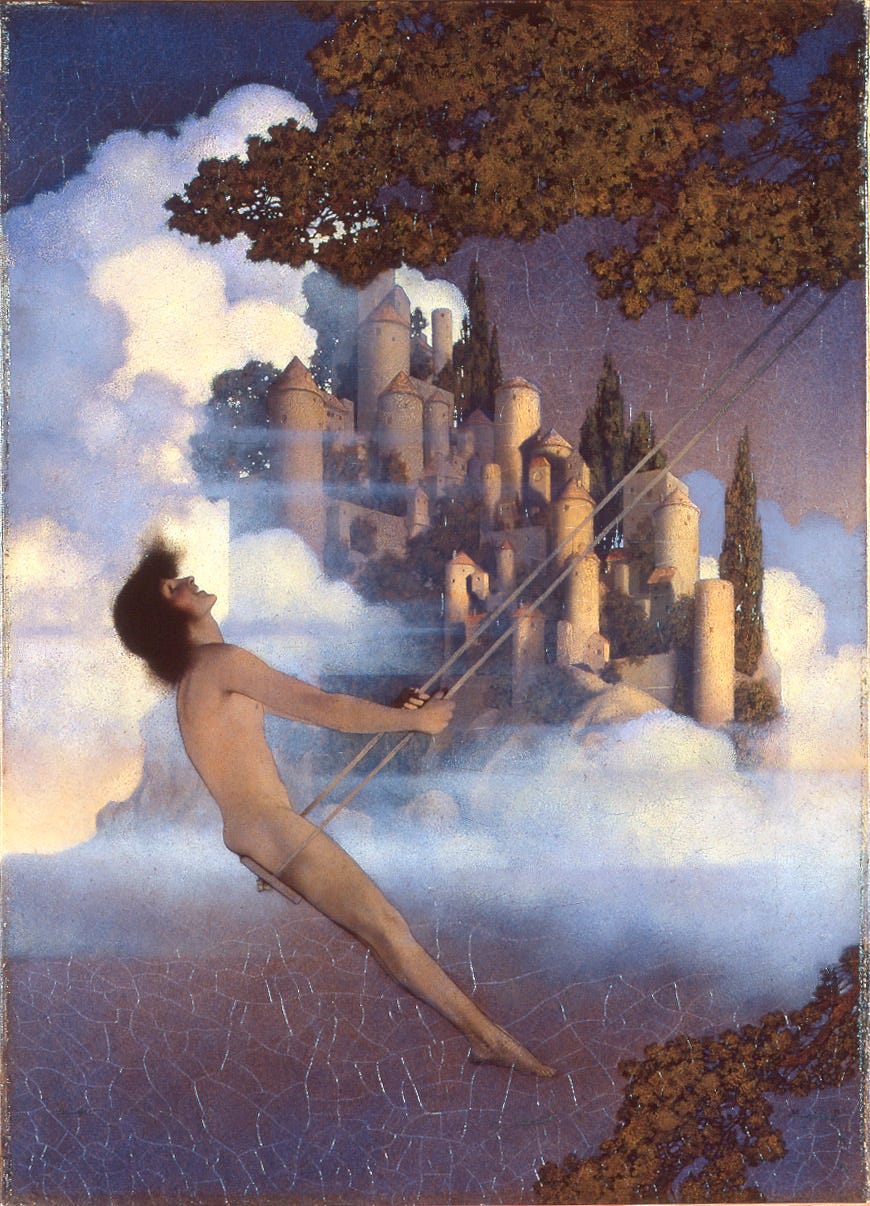
Larger-than-life landscape vistas, gloriously illuminated scenes of idealized androgynous youth, and grandiose narratives set in Ancient Greco-Roman or Medieval settings form the crux of his art. Remarkably, Parrish’s work received widespread exposure as he spent decades contributing illustrations for popular mass-market periodicals and newspapers, including Century Life, Scribner’s Magazine, and Time Magazine. Other commissions include advertisements for General Electric and Edison Mazda Lamps, illustrations for books like Arabian Nights (1909) and The Knave of Hearts (1925), and even landscape-themed greeting cards based on the bucolic scenery of his native New Hampshire. By 1925, Parrish’s art became so inculcated in everyday visual culture to the point where an estimated 1 in 4 Americans owned at least one of Parrish’s works - be it in the form of a magazine, print, calendar, illustrated book, or poster.

As an artist who greatly appealed to the general public for much of the first half of the 20th Century, it must be underscored that one of Parrish’s most enthusiastic admirers just so happened to be another American illustrator of a slightly later generation whose works would hold sway around the mid-20th Century onward: Norman Rockwell (American, 1894 - 1978). The website of the Norman Rockwell Museum has an entire entry on Parrish and how his art inspired Rockwell along with a quote on the artist’s reverence for Parrish:
“Maxfield Parrish was certainly one of our most prominent illustrators and hardly a home in America existed that didn’t have a Maxfield Parrish print. I’m an illustrator. Maxfield Parrish was a painter-illustrator. He was in the Golden Age of Illustration. When I was in art school I admired him. He was one of my gods.”
This statement alone could signify one thing: Parrish walked so Rockwell could run.
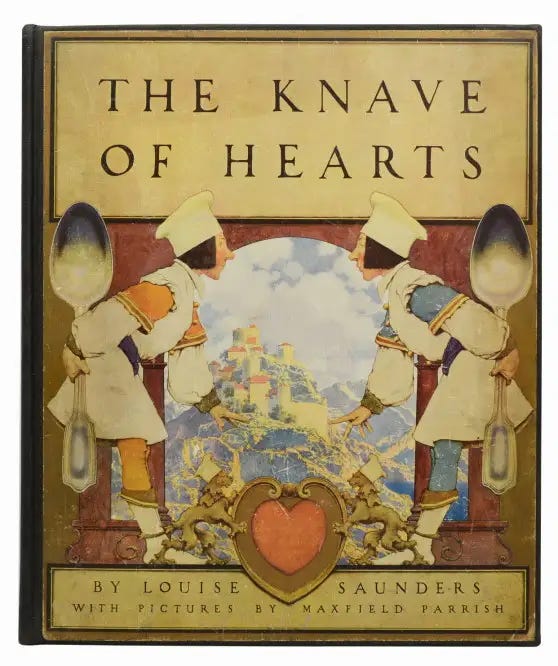
Though one could argue that Rockwell’s import may have overshadowed the legacy of Parrish, there are more reasons to prove that Parrish’s legacy has been given its due comparable to that of Rockwell. The elder illustrator’s works have been reproduced in different media in the nearly six decades since his passing: wall prints, t-shirts, coffee mugs, socks, pins, calendars, etc. (Etsy alone features hundreds of different types of Parrish-themed merchandise). Sometime in the last year, I purchased a 1990 pocket calendar at a used book sale in Connecticut that contained a selection of Parrish’s illustrations.
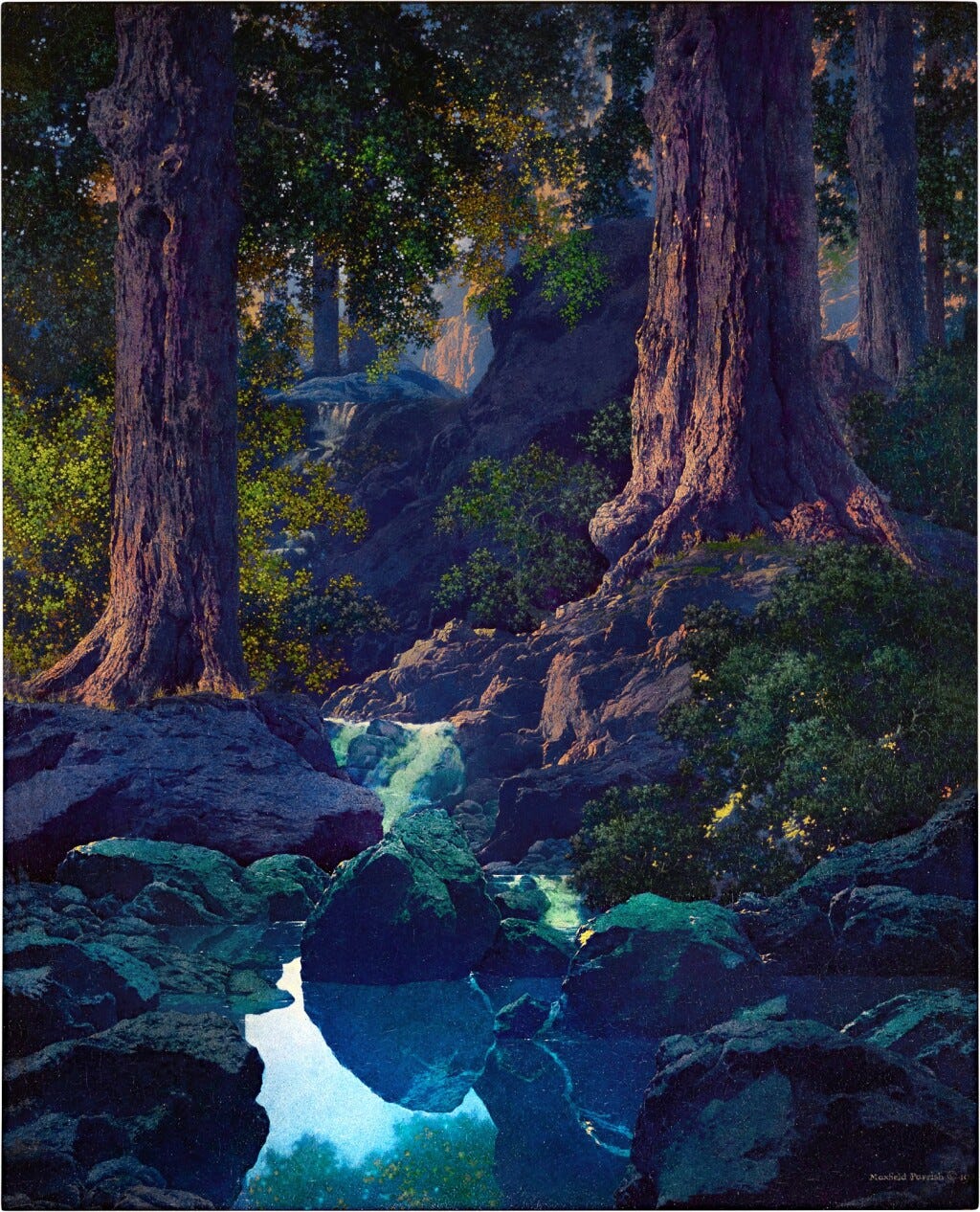
Furthermore, art historian and collector Alma Gilbert is an expert on Maxfield Parrish and has published a number of books about the artist’s life and art:
Maxfield Parrish: The Masterworks (2001)
The Make-Believe World of Maxfield Parrish and Sue Lewin (1997)
Maxfield Parrish Poster Book (1989)
Maxfield Parrish: The Landscapes (1998)
Maxfield Parrish: Master of Make-Believe (2005)
Parrish and Photography (1998)
Maxfield Parrish: The Secret Letters (2013)
The National Museum of American Illustration in Newport, Rhode Island possesses the largest collection of Parrish’s art. However, Parrish’s works can be found in dozens of other museums & collections all over the United States, including: The Metropolitan Museum of Art, New York; Fenimore Art Museum, Cooperstown, New York; The High Museum of Art, Atlanta, Georgia; The San Diego Museum of Art; The Philadelphia Museum of Art; The Cleveland Museum of Art, etc.
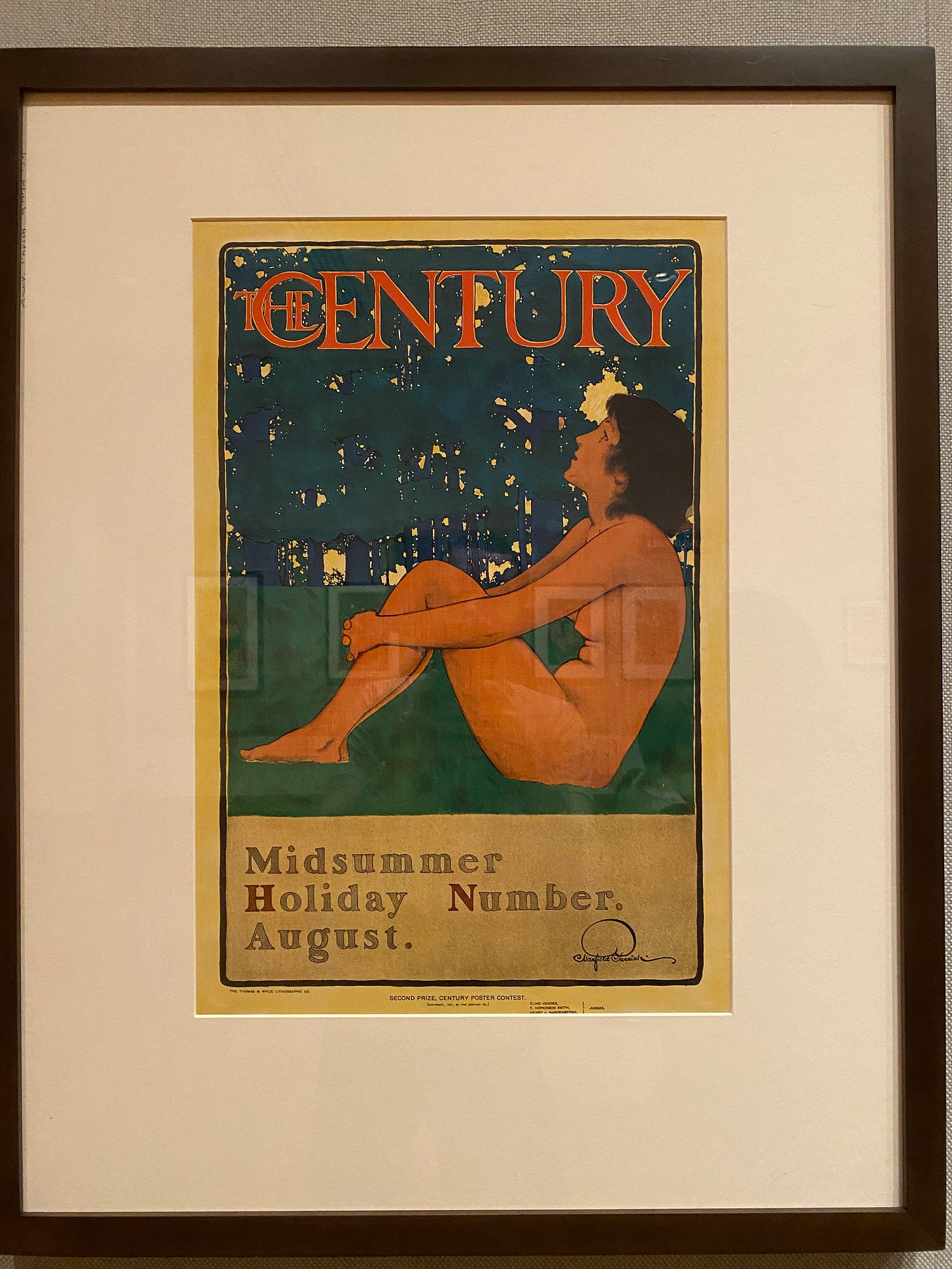
Most recently, a Parrish lithograph, The Century, August, Midsummer Holiday Number (1897), was included in The Metropolitan Museum of Art’s Spring - Summer 2024 exhibition, The Art of the Literary Poster: Works from the Leonard A. Lauder Collection. Parrish depicts a nude youth in a peaceful woodland scene that exudes the whimsical reverie characteristic of his style. This image was created as a submission for a poster contest for The Century Magazine’s 1896 midsummer issue. The work earned second place as Parrish made a slight deviation from the contest’s rules in conceiving this image to be printed in four colors instead of three. Despite this minor infraction, the contest deciders still chose the image as one of the top choices and allowed it to be used for the next midsummer issue of 1897.
This article is quite timely as there are two current exhibitions in which Parrish’s works are being shown:
The Ethereal Worlds of Maxfield Parrish at the Henry Morrison Flagler Museum, Palm Beach, Florida (on view now through May 25, 2025)
Illustrators of Light: Rockwell, Wyeth, & Parrish from the Edison Mazda Collection at The Norman Rockwell Museum, Stockbridge, Massachusetts (on view now through January 4, 2026)

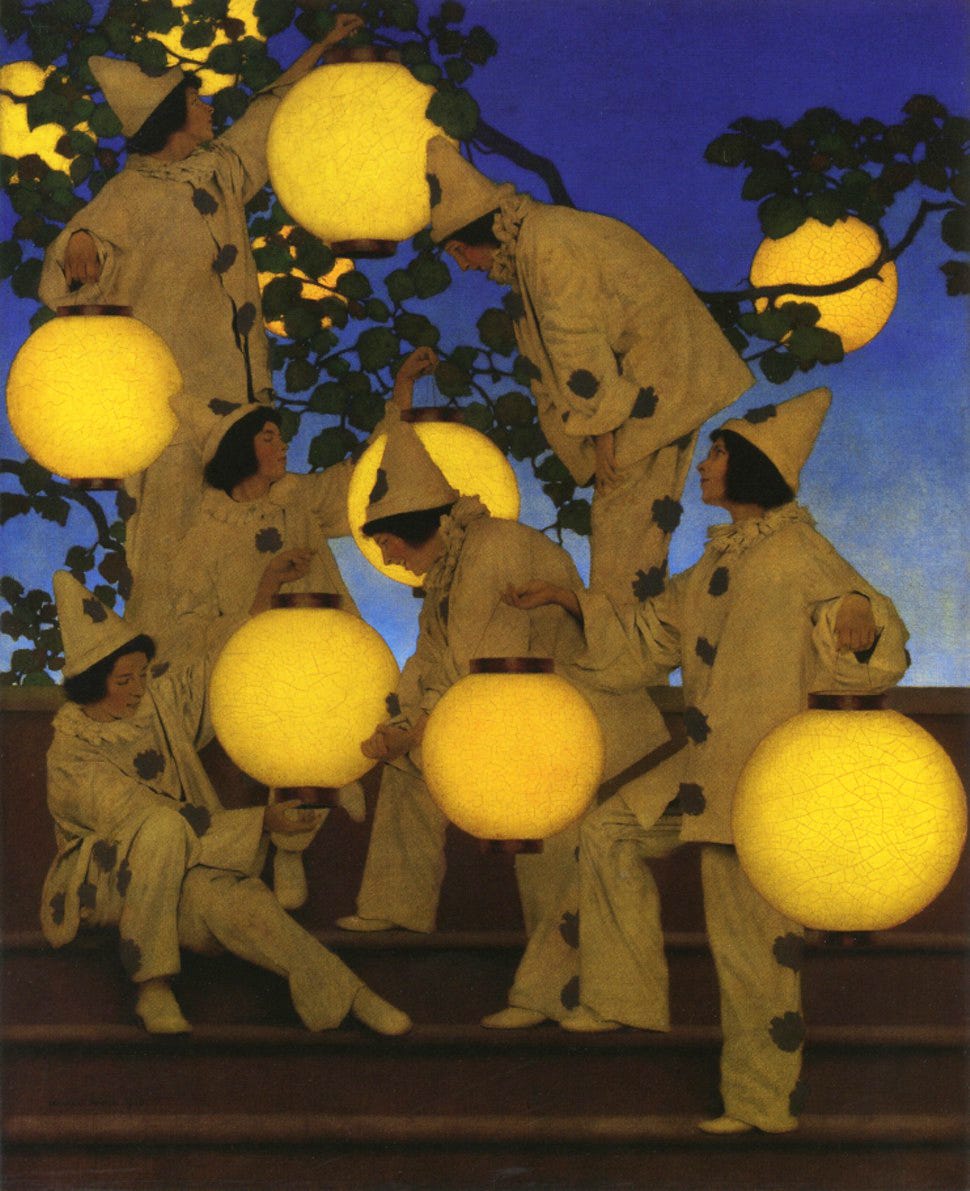

Bibliography
The Charles Hosmer Morse Museum of American Art. “Dinkey Bird.” Accessed February 18, 2025. https://morsemuseum.org/collection-highlights/paintings/dinkey-bird/.
Christie’s. “The Young Gleaner Lot Essay.” Accessed February 18, 2025. https://www.christies.com/en/lot/lot-6074146.
Gilbert, Alma. “Services.” The World of Maxfield Parrish. Accessed February 18, 2025. https://almagilbert.com/about/.
Klein, Colton. “Four Maxfield Parrish Masterworks Illustrate His Fascinating Artistic Method.” Sotheby’s, November 7, 2019. https://www.sothebys.com/en/articles/maxfield-parrish-paintings-illustrate-his-fascinating-artistic-method.
Manasseh, Christopher Cyrus. “Maxfield Parrish and the Art of the Pre-Raphaelites: Resisting Realism in American Painting.” Anistoriton - Journal of History, Archaeology, Art History 13 (2012 - 2013): 1–16. http://www.anistor.gr/english/enback/2012_1a_Anistoriton.pdf.
The National Museum of American Illustration. “Maxfield Parrish, 1870 - 1966.” Accessed February 18, 2025. https://americanillustration.org/project/maxfield-parrish/.
Norman Rockwell Museum. “Maxfield Parrish.” Accessed February 18, 2025. https://www.illustrationhistory.org/artists/maxfield-parrish.
Shelley, Stan. “Noted illustrator Maxfield Parrish famous for prints.” Hendersonville Times-News, January 10, 2005. https://www.blueridgenow.com/story/news/2005/01/11/noted-illustrator-maxfield-parrish-famous-for-prints/28163848007/.
Smithsonian Libraries and Archives / Unbound. “Maxfield Parrish - An Elusive Narrative,” February 9, 2012. https://blog.library.si.edu/blog/2012/02/09/maxfield-parrish-an-elusive-narrative/.
Tola, Maya M. “Maxfield Parrish - The Highest-Paid American Dreamer.” DailyArt Magazine, October 17, 2024. https://www.dailyartmagazine.com/maxfield-parrish/.




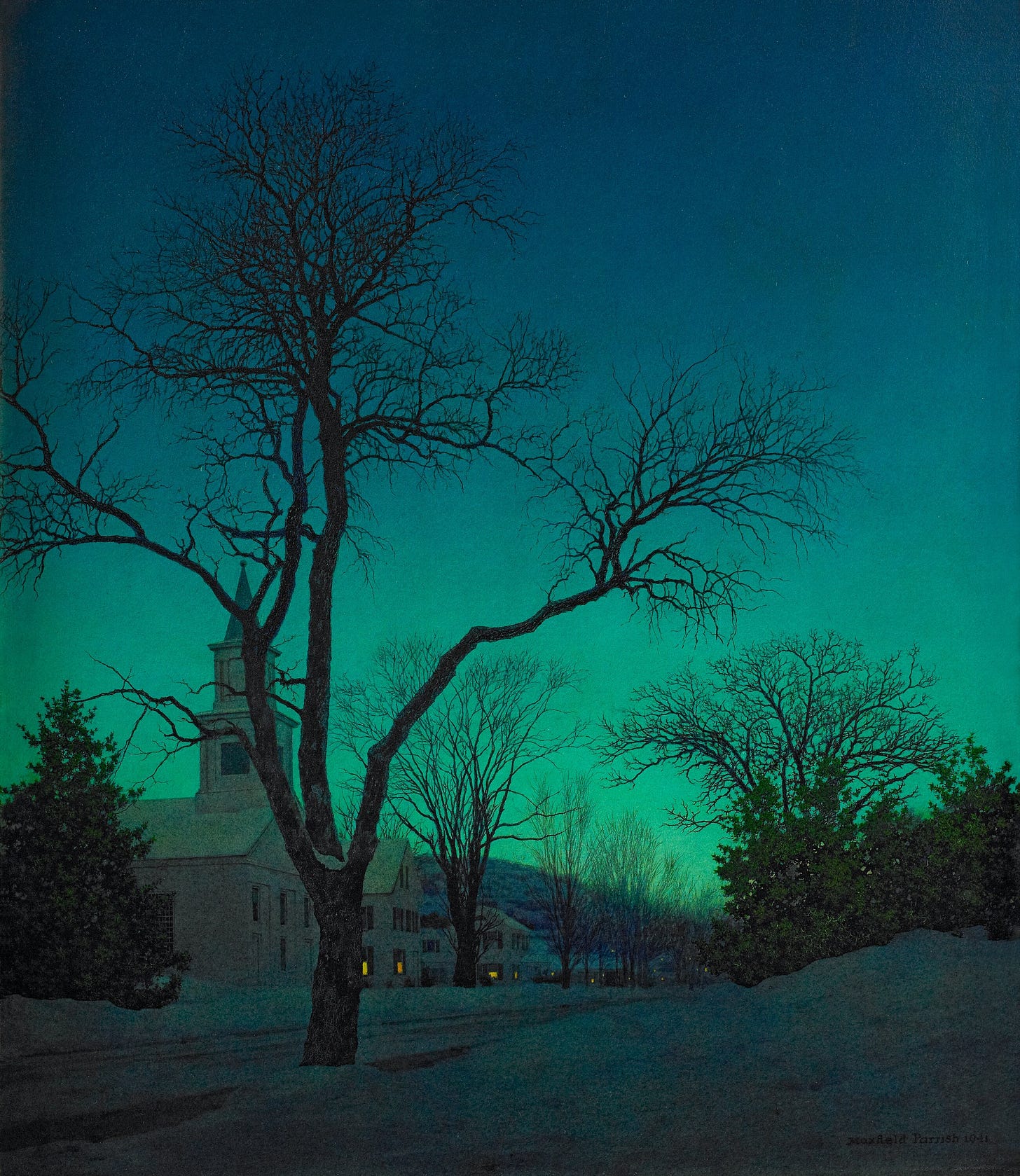
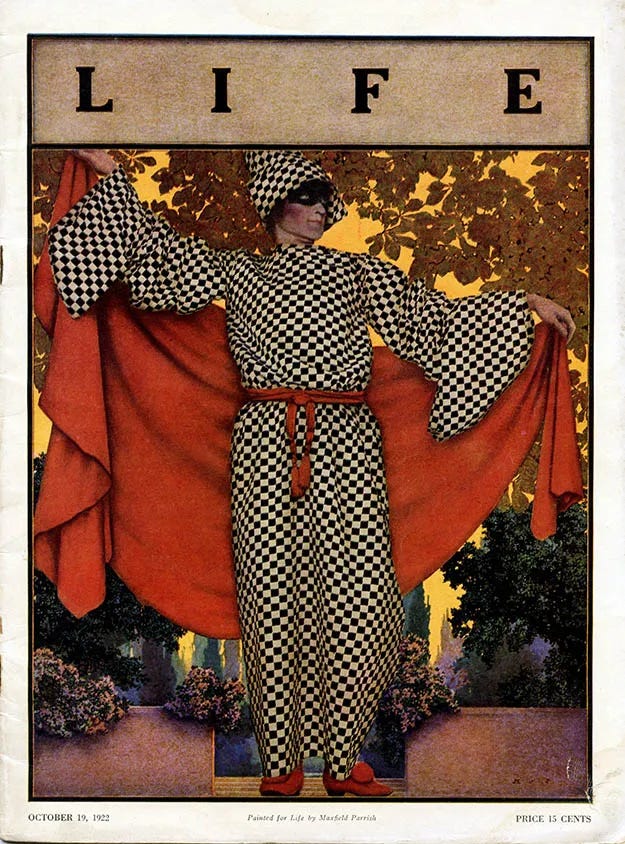
Love his work. One of my favourite illustrators.